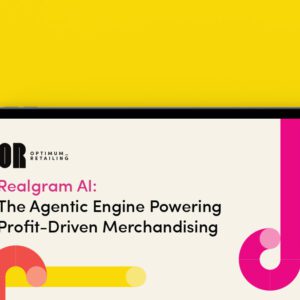By Miguel Ramos, Confirmit

Retailers are facing increasing pressure to create a compelling and interactive shopping experience. The need to encourage customers to return to the store, rather than shop online, is a growing problem — because how easy is it to click a button, enter your credit card numbers and just wait for the package to be delivered right to your doorstep? Talk about convenience.
The ease of online shopping is great for the customer — but what about the retailers who are trying to entice that same customer to enter their brick-and-mortar stores? The good news is, there’s a human element they can use to their advantage — impulse shopping. We’ve all had those shopping experiences where you’re “just browsing,” and suddenly you’re leaving the store with two bags in hand. Tapping into this “need it now” desire has helped boost sales in brick-and-mortar stores and ensure they remain competitive. To capitalize on this growing trend, more and more retailers are beginning to leverage beacon technology.
What are beacons? Beacons are small and typically unseen devices that use Bluetooth low-energy (BLE) wireless and geofencing technology. They proactively ‘listen’ for a signal when a customer is within a specified proximity to a beacon so that customer location data can be captured in store. More importantly, as the customer has ‘opted in’ and downloaded a retailer’s (or another company’s) branded app onto their phone, it means that the app can link location data with other sources of customer information at the organization’s disposal. This increases the ability of companies to deliver a highly-personalized experience, tailored to meet individual wants and needs when it matters most, addressing all the permission and data privacy issues at the same time.
Why is beacon technology beneficial? There are many reasons why marketers and customer experience professionals are finding great use cases for beacon technology. Here are just a few of them for you to consider:
1. It provides a real-time view of the customer experience. This is now a key differentiator in many markets. Additionally, it follows the principle that location technology should also be regarded as an integral part of customer experience (CX) and Market Research (MR) programs that are targeted with understanding and leveraging key customer behavior. Asking customer questions while they’re in situ not only reduces issues caused by failure to recall, but also enables businesses to act quickly in some cases and prevent negative word of mouth.
2. It gives you the ability to perform “live” A/B testing with real-time feedback. By correlating data about known customers, companies can use predictive analytics to understand likely future behavior. Location data then offers a unique opportunity to understand more about their actions at the point of purchase (or non-purchase). For example, if two recognized customers of a particular brand of coffee both enter a supermarket, they can be presented with two different promotional offers — 20% off for one and a free cup for the other. A very short survey can be triggered to help understand which promotion is most effective.
You might be thinking, “I don’t want to be bombarded with yet another survey.” This is why it’s important for organizations to take data integration seriously. It’s about correlating location-based data, including path to purchase or non-purchase and promotion conversion rates, with other rich sources of customer data, such as purchase patterns and demographics. This enables businesses to identify and selectively trigger the ‘next step’ with individual customers, potentially at the very moment when they are making a purchase decision.
Looking to conduct a deeper analysis of customer behavior? Beacon technology clearly has its benefits. Incorporate this instant form of feedback as you fine-tune processes and look to boost sales. The real-time, emotion-led feedback from beacon technology could shine the way for a much-improved customer experience.
Miguel Ramos is a Subject Matter Expert at Confirmit. A technologist with more than 15 years’ experience in mobile technologies, technology strategy and implementation, Ramos is part of Confirmit thought leadership and marketing teams, working closely with Product Management on new innovations, product launches and methodologies. In this role, he regularly presents at webinars and at global conferences on some of the most cutting-edge issues affecting both Market Research and Customer Experience professionals. He is recognized as a thought leader in areas such as reducing survey fatigue though new approaches to data collection, and all aspects of the use of mobile and multi-media in research. Prior to this role, Ramos led Confirmit’s Mobile practice in EMEA and Asia Pacific, developing mobile solutions for both Voice of the Customer (VoC) and Market Research. He holds an MBA from Durham University (UK).






